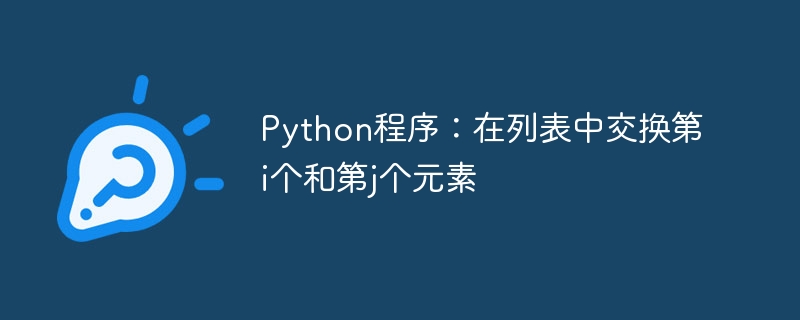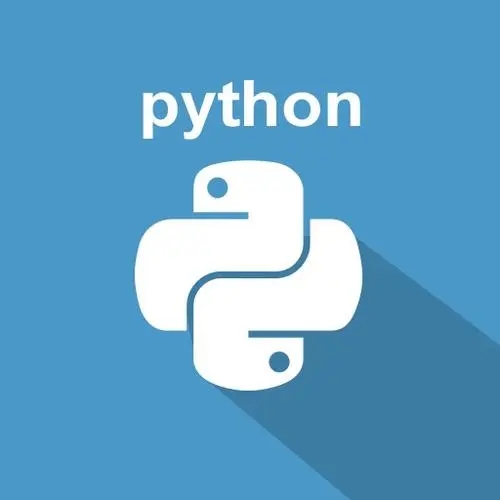
In Python, lists are versatile data structures that allow us to store and manipulate collections of items. There may be situations where we need to interchange or swap the positions of elements within a list. In this blog post, we will explore how to write a Python program to swap the i'th and j'th elements in a list.
当前的任务是开发一个Python程序,它以列表作为输入,并交换列表中第i个和第j个元素的位置。例如,给定列表[1, 2, 3, 4, 5],如果我们想要交换索引为1和索引为3的元素,程序应该返回[1, 4, 3, 2, 5],其中元素2和4的位置被交换。
要解决这个问题,我们可以按照逐步的步骤进行操作−
立即学习“Python免费学习笔记(深入)”;
Take the list and the indices i and j as input.
从列表中检索索引为 i 和 j 的元素。
将索引为 i 的元素分配给一个临时变量。
将索引为i的元素替换为索引为j的元素。
Replace the element at index j with the temporary variable.
Return the modified list with the swapped elements.
通过采用这种方法,我们可以有效地交换列表中的第i个和第j个元素。
在下一节中,我们将深入探讨实现细节,提供一个逐步指南,介绍如何编写Python程序来交换列表中第i个和第j个元素。
现在我们已经理解了问题,并且有了一个解决方案,让我们深入了解Python程序中交换列表中第i个和第j个元素的实现细节。
Here's a step-by-step guide on how to write the program −
立即学习“Python免费学习笔记(深入)”;
Define a function, let's call it swap_elements, that takes three parameters: the list, i, and j.
Inside the function, retrieve the elements at indices i and j from the list using indexing.
将索引为i的元素分配给一个临时变量,以保留其值。
将索引为i的元素替换为索引为j的元素。
Replace the element at index j with the temporary variable, which holds the original value of the element at index i
返回修改后的列表。
Here's the Python code that implements the above steps −
def swap_elements(lst, i, j):
lst[i], lst[j] = lst[j], lst[i]
return lst
In this code snippet, we utilize the power of Python's multiple assignment feature to swap the elements. By assigning lst[j] to lst[i] and lst[i] to lst[j] in a single line, we achieve the desired swap.
Now, let's test our swap_elements function with a sample input to validate its functionality −
my_list = [1, 2, 3, 4, 5]
i = 1
j = 3
result = swap_elements(my_list, i, j)
print("Modified List:", result)
当您运行此代码时,您应该看到以下输出 −
Modified List: [1, 4, 3, 2, 5]
在下一节中,我们将使用额外的示例来测试该程序,以展示其功能。
my_list = [10, 20, 30, 40, 50]
i = 2
j = 4
result = swap_elements(my_list, i, j)
print("Modified List:", result)
[10, 20, 50, 40, 30]
my_list = ['a', 'b', 'c', 'd']
i = 0
j = 3
result = swap_elements(my_list, i, j)
print("Modified List:", result)
['d', 'b', 'c', 'a']
尽管我们开发的Python程序成功地在列表中交换了第i个和第j个元素,但是有必要意识到潜在的限制,并探索进一步改进或扩展的机会。
立即学习“Python免费学习笔记(深入)”;
The program assumes that the indices i and j are valid and within the range of the list. If the indices are out of bounds, it may result in an IndexError. Handling such cases can be an improvement to consider.
The program only swaps the elements at the specified indices. If there are duplicate elements in the list and we want to swap all occurrences of a particular element, the program would need to be modified accordingly.
立即学习“Python免费学习笔记(深入)”;
Error Handling − To enhance the program's robustness, we can add error handling mechanisms to handle invalid indices or other potential exceptions gracefully. This can provide better user experience and prevent unexpected program crashes.
User Interaction − We can expand the program to interactively prompt the user to enter the list, indices, and perform the swap operation. This can make the program more user-friendly and versatile.
交换多个元素 − 如前所述,如果存在重复元素并且我们想要交换特定元素的所有出现次数,我们可以修改程序以满足此类要求。这可能涉及遍历列表并在遇到所需元素时执行交换。
我们已成功开发了一个Python程序,用于在列表中交换第i个和第j个元素。我们讨论了实现细节,提供了代码片段,使用示例输入测试了程序,并探索了进一步改进的可能性。通过理解问题,利用算法和实现程序,我们可以轻松地操作列表中元素的位置,以满足我们的要求。
以上就是Python程序:在列表中交换第i个和第j个元素的详细内容,更多请关注php中文网其它相关文章!

python怎么学习?python怎么入门?python在哪学?python怎么学才快?不用担心,这里为大家提供了python速学教程(入门到精通),有需要的小伙伴保存下载就能学习啦!

Copyright 2014-2025 https://www.php.cn/ All Rights Reserved | php.cn | 湘ICP备2023035733号